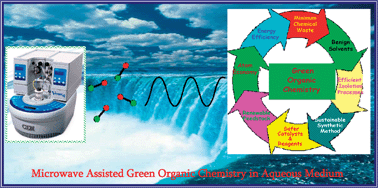Aqueous microwave chemistry: a clean and green synthetic tool for rapid drug discovery
Abstract
The development of “Greener Organic Chemistry” is due to the recognition that environmentally friendly products and processes will be economical in the long term as they circumvent the need for treating ‘end-of-the-pipe’ pollutants and by-products generated by conventional synthesis. The fundamentals and significant outcomes of microwave-assisted organic synthesis in aqueous medium are summarized in this tutorial review, which have resulted in the development of relatively sustainable and environmentally benign protocols for the synthesis of


 Please wait while we load your content...
Please wait while we load your content...